3 Stages of AI-Powered Adoption for Engineering Organisations
Introduction to AI and Machine Learning Adoption
Artificial Intelligence (AI) or Machine Learning (ML) have become ubiquitous in the engineering sector, promising faster time-to-market and enhanced decision-making for product design. However, integrating and adopting AI is not a seamless process and demands a strategic and phased approach.
In one of our last blog posts, we covered the "build vs. buy" dilemma from the perspective of engineers and organisations seeking the most suitable AI solution for their engineering pursuits in AI adoption.
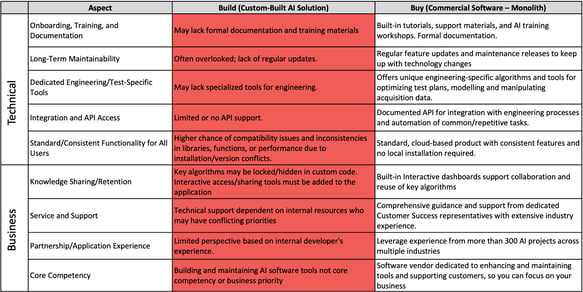
Suppose you have already made a choice in using AI tools and decided whether you want to build or buy a solution off the shelf. In that case, this article will provide you with a comprehensive 3-phase approach to AI adoption and deploying AI solutions across your entire company for successful business growth.
The approach is segmented into three different stages:
1) The Crawl Stage – In this stage, you prove you can solve a specific problem conceptually using ML.
2) The Walk Stage – This stage proposes that you expand the number of use cases, accelerate old workflows, and build new ones with the knowledge gained from the first stage.
3) The Run Stage – In this stage, you collaborate with customers and colleagues and fully embed the solution within the company and across different departments.
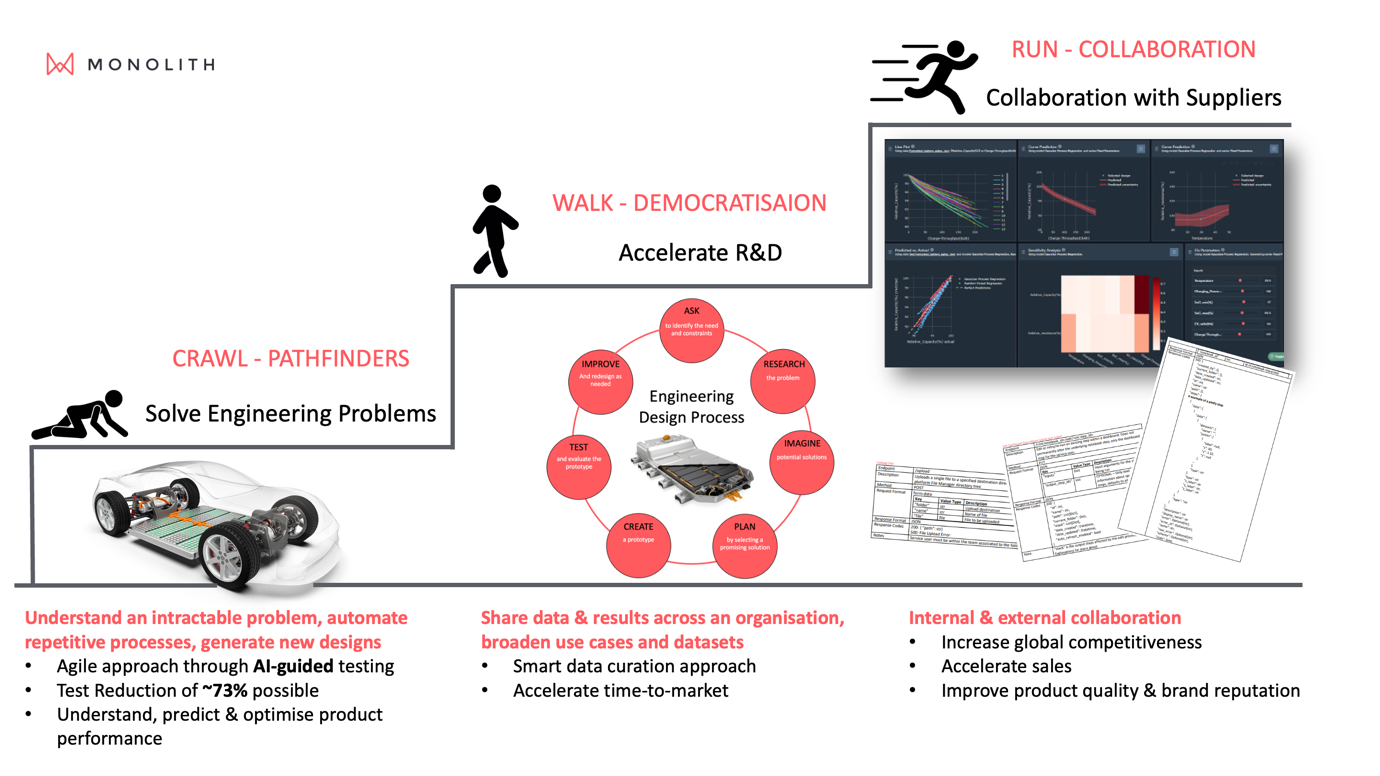
Visual representation of the 3-phase approach to machine learning adoption in your organisation.
Adoption Stage 1: Starting to Crawl
Define a Problem: The starting point involves identifying a specific engineering challenge that aligns with AI capabilities. Setting realistic expectations and avoiding the common misconception that AI can solve all problems is crucial.
Reduce Scope: Amidst the excitement of enterprise AI adoption, it's common to go too big too soon. To counter this, the "Crawl" phase emphasises starting small, focusing on a challenge that can be completed within 1 to 3 months, ensuring measurable success.
The first step is about keeping it real. Instead of tackling everything at once, find one specific engineering challenge, or at least one function, that fits what AI can do. Avoid the idea that AI tools are magic fix for all problems — it's simply not true.
Data Exploration: Understanding the available data for the chosen problem is paramount. Questions related to data availability, structure, production frequency, and generation methods need careful consideration.
The more you know about your data, the better. No solo missions here. Build a small team — people who understand the data and the problem.
After that, we need to look more closely at the available data to determine how feasible the problem is to set up:
-
What data types are available for that use case?
-
How easy is it to create more?
-
How is the data structured? Is it even structured?
-
How frequently is the data produced?
-
Where is the data stored?
-
What test methods generate(d) it?
Getting someone in the company excited about this is crucial — because the first phase will take time, and you need a supporter.
Test things out. See how AI can help with your engineering problems. Learn about different AI methods and, ideally, get an expert on your side who has run into similar issues already to save you time and money.
It's not about solving everything but showing AI has potential and helps engineers focus on more.
A carefully planned and achievable strategy is imperative to navigate the "Crawl" stage successfully.
Team Collaboration: As we’ve already discussed, this is not a solo project. It is a team effort. Identifying a dedicated team, including those with a deep understanding of the dataset and the problem at hand, is crucial. A champion within the organization can drive and facilitate the process, and an external partner can accelerate this process.
Testing Capability: The "Crawl" stage involves trials to gauge how AI can contribute to solving engineering problems; most of the time, these are intractable, non-linear problems that are hard to solve using traditional approaches such as physics-based simulations. This is an opportune time to delve into the strengths and weaknesses of different machine learning and ai algorithms.
Learning New Skills: As part of this initial stage, gaining familiarity with various machine learning models is essential. Engineers need to understand how these models work and their implications on performance. There are a lot of models out there, so again, having an expert at this stage who can guide you is essential.
What’s Next?: By the end of the "Crawl" stage, the focus is on proving the concept of using AI-powered technology to solve a specific engineering challenge. While the value may be visualized, realizing the return on investment is an ongoing process.
Stage 2: Learning to Walk
Having successfully proven the concept in the "Crawl" stage, the next phase, "Learning to Walk", involves expanding and generating a tangible return on investment.
Expand Problem Scope: Reviewing your initially created models is critical. Consider their applicability to other problems (Transfer Learning) and explore generalising models or gathering additional data to broaden the scope.
Standardise Data: The emphasis shifts to standardising and parameterising data collection. Understanding the differences between the current and subsequent design iterations and identifying standard features is crucial.
Improve Models: Identifying and addressing errors in initial models is a challenge. Leveraging explainability tools (XAI) helps understand data intricacies and enhance model accuracy.
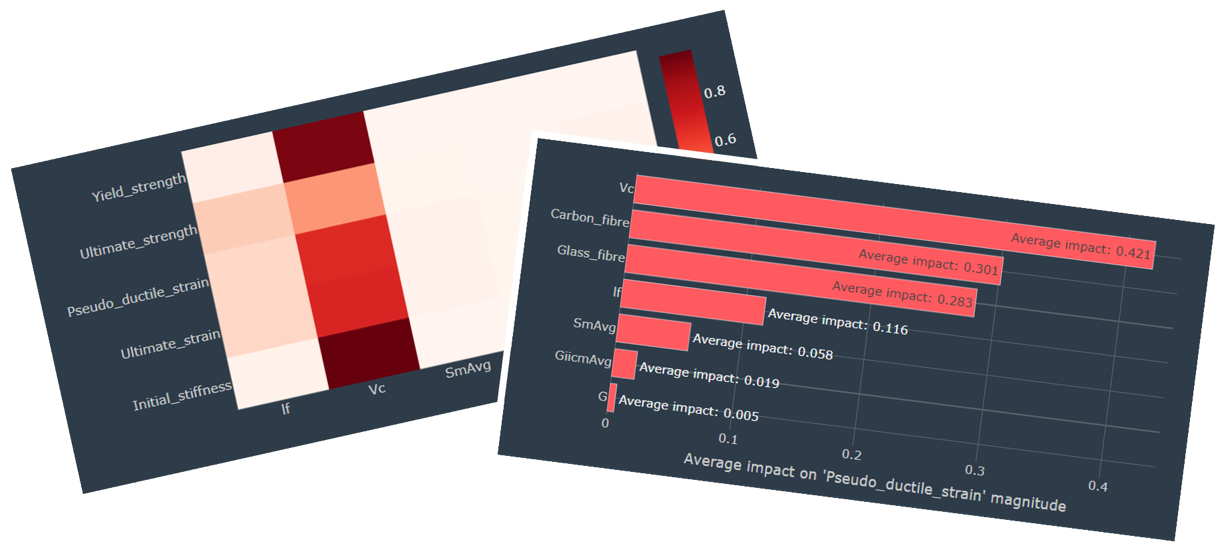
Workflow Integration: Embedding AI into daily workflows is a pivotal step. This involves setting up processing pipelines that facilitate seamless data communication between tools and machine learning algorithms.
Team Expansion: As the dataset expands, so does the need for team support. Sharing progress with champions and stakeholders and replicating successful projects in different areas contribute to the growth of the AI adoption initiative.
By the end of this stage, organizations begin to realise the value of their AI solution. Convincing stakeholders of the return on investment (ROI) in machine learning becomes more tangible.
Stage 3: Up and Running
As organizations approach the final stage, "Up and Running", the focus shifts towards integrating AI into the infrastructure and ensuring sustainable deployment.
Infrastructure Integration: Integrating AI into existing IT infrastructure becomes necessary. This enables consolidating data from multidisciplinary sources, paving the way for more holistic problem-solving.
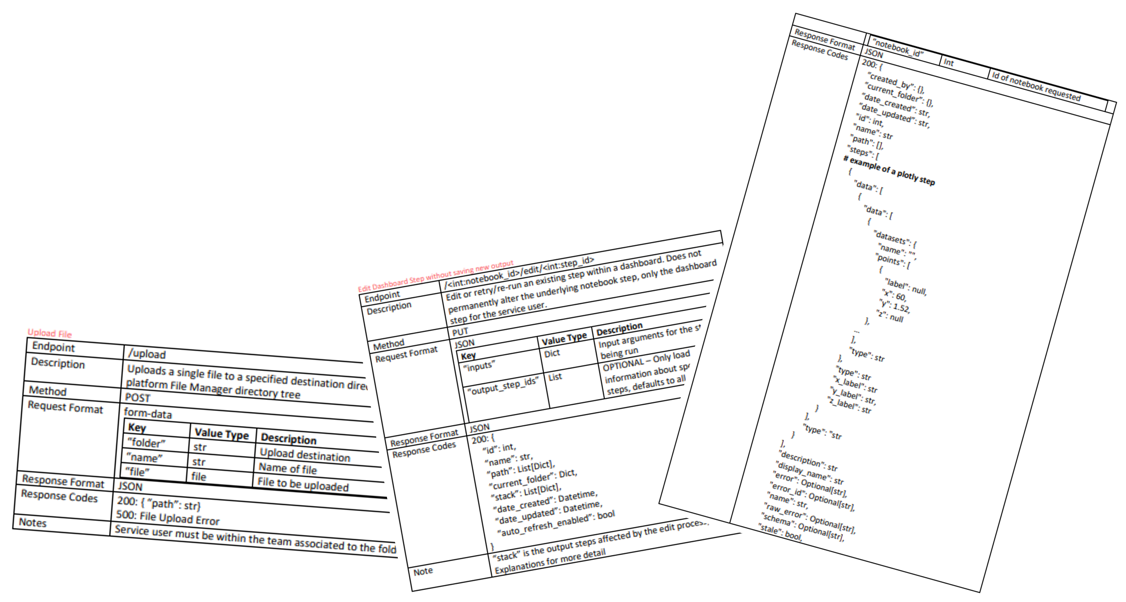
APIs allow you to update workflow automatically by sending new data.
You can run models remotely to access test outcome predictions quickly and iteratively.
Productionise AI: Reviewing and deploying models to production is a critical step. Continuous maintenance, documentation, sharing of results, and improvement of models based on real-life scenarios and user feedback become integral.
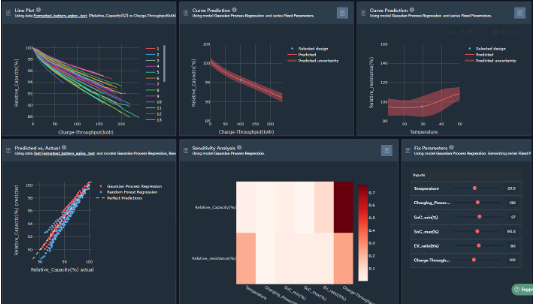
Dashboards allow you to select the key steps of a notebook and lay them out to produce intuitive and interactive notebooks for users to consume results seamlessly, adapt parameters, and see updated results in real time.
Conclusion & Summary
Successfully adopting artificial intelligence in the engineering sector demands an efficient approach. By progressing through these three stages, organisations can navigate the complexities of artificial intelligence adoption and leverage its full potential to enhance business processes and digital technologies.

Over time, the companies that work with experts will thrive and get ahead of their competition. At Monolith, we’ve worked on over 300 commercial AI implementation projects over the last 6 years. That experience has driven us to build a platform that can sustain, maintain, and scale with our customers.
The journey, from proving the concept to realising tangible benefits, signifies a transformative evolution in AI integration in engineering industries.



